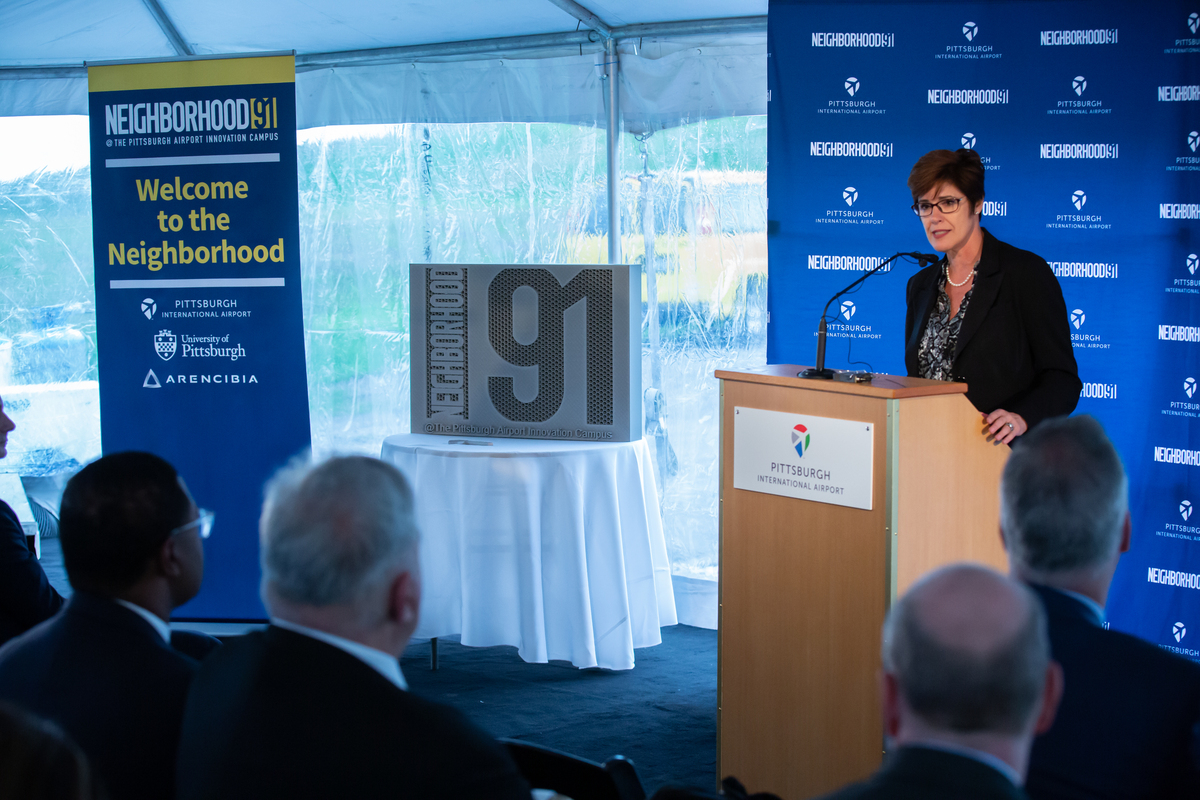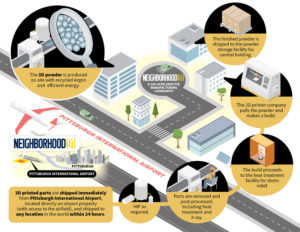New Study Measures Impact of Neighborhood 91 on Region, Industry
Innovative development on airport property projected to generate thousands of jobs
By Matt Neistei
Published January 15, 2020
Read Time: 3 mins
An innovative industrial park at Pittsburgh International Airport will create nearly 6,000 jobs over the next decade, according to a new study.
Neighborhood 91, the first development in the world to condense and connect all components of the advanced manufacturing (AM) and 3D printing supply chain into one production ecosystem, will also generate about $2.2 billion in wages over that same time period, according to The Barnes Group Advisors (TBGA), an additive manufacturing consultancy.
READ MORE: View the economic impact whitepaper here.
“The timing is perfect and this has been a long time coming,” said John Barnes, founder of the firm and co-author of the study. “My team has been involved AM for 25+ years and we are seeing it mature into a mainstream production process. The concept developed with the Pittsburgh Airport Innovation Campus (PAIC) couldn’t be better timed or located. Pittsburgh and the region already contain the supply chain for AM, it just isn’t connected.”
The Allegheny County Airport Authority, which operates the airport, announced the creation of Neighborhood 91 in October as the first development of the airport innovation campus, a 195-acre business park devoted to the burgeoning AM industry.
First tenant announced
Arencibia, a Coopersburg, Pa.-based firm that recycles argon gas, a key element used in AM, was also announced as the first tenant. On-site supply of the recycled gas, along with a planned microgrid and the neighbor-like proximity of firms specializing in each step of the AM process, is expected to greatly reduce operating costs and speed up production cycles.
For example, the study from TBGA, which is assisting the ACAA in the development of Neighborhood 91, analyzed scenarios for two types of businesses that could locate at the park – a powder manufacturer and a parts manufacturer – and found significant advantages.
“Both players see a benefit due to direct cost reductions of 25%-30% as a ‘neighbor,’ or tenant, in Neighborhood 91, and the parts manufacturer could achieve a cash-positive business one year earlier (than the industry baseline),” the authors wrote.
READ MORE: Airport Innovation Campus Welcomes First Tenant
Immediate proximity to air, rail and highway transportation networks also work in businesses’ favor, according to the study.
“Neighborhood 91’s centralized capabilities significantly reduce the need for parts to be managed across a dispersed supply chain,” the authors wrote. “This creates cost savings or avoidances in the form of reduced transportation, reduced logistics, and reduced supplier management.”
But the benefits will extend beyond the campus and into the community. A partnership with the University of Pittsburgh will amplify workforce development, as well as research and development, in additive manufacturing, which in turn creates a “spillover benefit” for other industrial stakeholders in the region, according to the study.
“Neighborhood 91 is so exciting because it is about rethinking collaboration and leveraging the power of proximity,” said Pitt Chancellor Patrick Gallagher. “It places all the right players together — from industry, R&D and higher education — to turn ideas into useful things. This teamwork is what manufacturing is all about — and what Pittsburgh’s legacy is all about.”
And all of these factors also play into sustainability. Additive manufacturing alone consumes less energy and creates less emissions, but the microgrid and recycled argon will reduce energy lost in transmission lines and the “neighborhood” layout will reduce emissions associated with product shipping and employee travel.
“This is an opportunity to match airport resources with the region’s designation as a center for additive manufacturing, artificial intelligence, robotics, energy and more,” said Allegheny County Airport Authority CEO Christina Cassotis. “We see this as a campus for research and development, production, offices, training – all coming together here.”
Watch
This Next
Read
This Next







